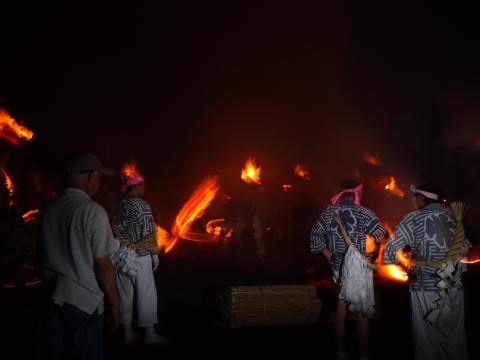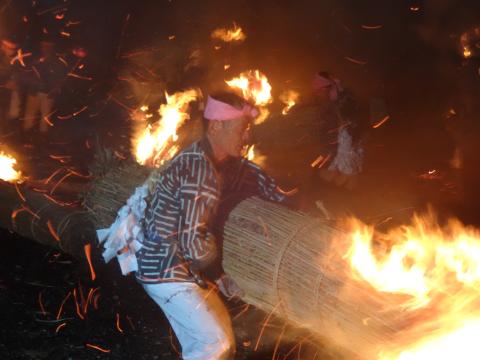Coming to Japan during the summer season was one of the best decisions I could have made. Why, do you ask? Festivals. No, not the music festivals or film festivals that you may be used to. Japan's cultural festivals have been continued over hundreds of years -- it's a time where family members of all generations come together and enjoy each other's company over ritual dances and songs, street food, and fireworks.
The Obon Festival is a little different from these festivals, though. Obon is a time to commemorate one's family ancestry as well as remember loved ones. Japanese culture puts a major focus on carrying on the family name into the future, so the Obon Festival is taken very seriously. Businessmen and businesswomen who came to the city to find work travel back to their families in the countryside to partake in the Shinto rituals and region-specific festivals.
My aunt and uncle who I am staying with for the duration of my time abroad are shown in the images below taking part in Shinto rituals.

A Shinto graveyard. Each raised platform is designated to a separate family. My aunt and uncle ensure that the stone platform for my aunt's grandfather is clean.

My grandfather, my aunt's father, remembering his father. The wooden board to the left of the stone displays his father's name. Once my grandfather passes, a board with his name will be added to the grave.

My aunt lighting sticks of incense and placing them around the stone.

My aunt greeting her grandfather through prayer. Many Japanese people clap two times and say a quick prayer to Shinto graves or memorial sites to show respect. To deceased family members, a more personal prayer may be said.
After visiting the family grave, my family and I went to the Obon festival specific to Shinshiro city. This festival is called the hi-ondori, which translates to "fire dance." The first hi-ondori was performed to appease the spirits of the dead soldiers of the infamous Battle of Nagashino that took place in Shinshiro in 1575. The fallen soldiers, angry at the townspeople for not respecting them, sent a swarm of bees to plague the people. The townspeople made lit torches and waved them in the air to drive them away, while repeating a chant to console the angry spirits. This "fire dance" became part of the Obon ritual for the people of Shinshiro, and continues to this day.

The chant as written and illustrated by a Shinshiro middle school student.

Participants walk into the river and get salt thrown on them as a purification process prior to the ceremony.

Flutists and drummers perform for the ancestors of Shinshiro.

Participants wait for their turn to wave the torches.

A participant waves a torch. The torches are made of woven reed wrapped into cylindrical form and stuffed with dried fern.

Many interesting patterns are made when participants wave the fire torches. Do you see a dragon?
**********************************************************************************
The Obon Festival was an eye-opening experience for me in many ways. Not only was I able to experience the cultural practices of my family's hometown, I learned of a unique interaction between the living and the dead.

Deanna Stout
<p>Kamishibai is a Japanese style of storytelling that was popular in the first half of the 20th century. These narrators were street performers of a sort -- they read a variety of stories from a series of illustrated paper boards, entertaining the commonfolk before the emergence of television. I will blog about my experiences in Japan through a modernized version of kamishibai, telling my stories through a series of photographs and their corresponding narrations that will be similar to a novel.</p>






